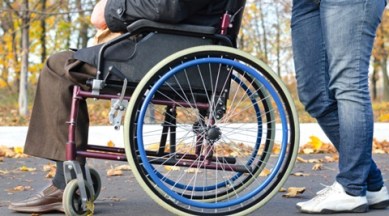Brain control helps paralysed man walk again
In a world's first such experiment, scientists have used non-invasive direct brain control system to get a person - with complete paralysis in both legs owing to spinal cord injury - to walk again.

In a world’s first such experiment, scientists have used non-invasive direct brain control system to get a person – with complete paralysis in both legs owing to spinal cord injury – to walk again.
The participant, who had been paralysed from both legs (a condition called paraplegia) for five years, walked along a 3.66 metre long course using an electroencephalogram (EEG) based system.
Mental training was initially needed to reactivate the brain’s walking ability.
“Even after years of paralysis, the brain can still generate robust brain waves that can be harnessed to enable basic walking,” said An Do, one of the lead researchers from University of California-Irvine.
The system takes electrical signals from the participant’s brain which then travel down to electrodes placed around his knees to create movement.
This is the first time that a person with complete paralysis in both legs was able to walk without relying on manually-controlled robotic limbs, as with previous walking aid devices.
“We showed that you can restore intuitive, brain-controlled walking after a complete spinal cord injury,” Dr Do added.
Seated and wearing an EEG cap to read his brainwaves, the participant trained to control an avatar in a virtual reality environment.
He also required physical training to recondition and strengthen his leg muscles.
The participant later practiced walking while suspended five cm above ground, so he could freely move his legs without having to support himself.
On his 20th visit, he translated these skills to walk on the ground and wore a body-weight support system for aid and to prevent falls.
Over the 19-week testing period, he gained more control and performed more tests per visit.
“This non-invasive system for leg muscle stimulation is a promising method and is an advance of our current brain-controlled systems that use virtual reality or a robotic exoskeleton,” Dr Do noted.
“Once we have confirmed the usability of this non-invasive system, we can look into invasive means such as brain implants,” informed Dr Zoran Nenadic, senior lead researcher of the study.
In addition, such an implant could deliver sensation back to the brain, enabling the user to feel their legs.
The research was published in the open access Journal of NeuroEngineering and Rehabilitation.